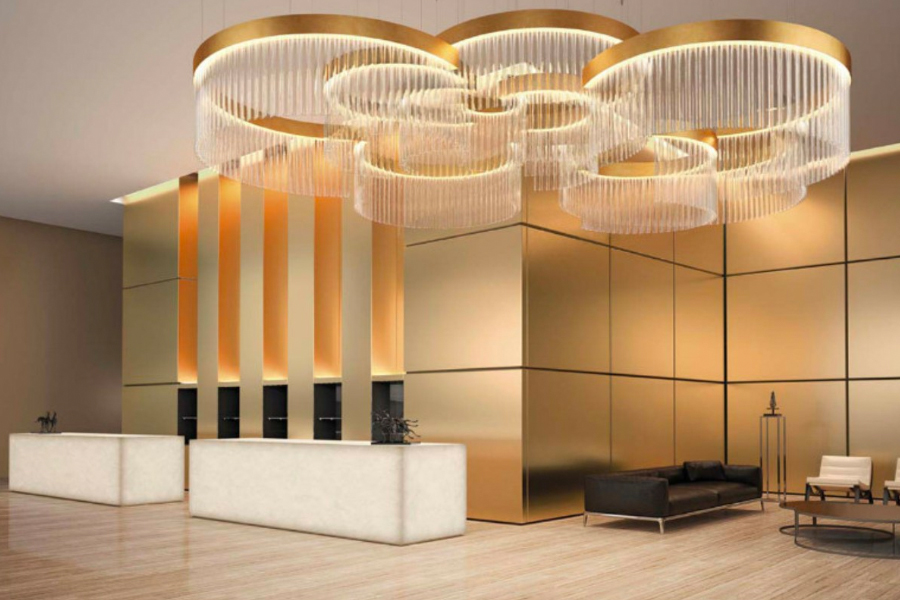
In the ever-evolving world of hospitality, hotels are embracing sustainable practices to reduce their environmental footprint and create more energy-efficient spaces. Lighting, being an essential aspect of hotel design, plays a significant role in both aesthetics and energy consumption. By incorporating energy-efficient lighting solutions, hotels can achieve a harmonious blend of elegance and sustainability.
In this article, we will explore the persuasive benefits and expert strategies for incorporating energy-efficient lighting in hotel designs. From LED technology to smart lighting controls, let’s embark on a journey towards enlightened elegance.
1. The Advantages of Energy-Efficient Lighting:
Embracing energy-efficient lighting brings numerous benefits to hotel designs. Firstly, it significantly reduces energy consumption, leading to cost savings and lower utility bills. By utilizing lighting technologies that consume less energy, hotels can allocate their resources towards other areas of improvement. Secondly, energy-efficient lighting reduces carbon emissions, contributing to a greener and more sustainable environment. It aligns with the growing trend of eco-conscious travelers seeking eco-friendly accommodations. Lastly, energy-efficient lighting enhances the overall guest experience by creating comfortable and well-lit spaces that promote relaxation and productivity.
2. LED Lighting Technology:
LED (Light Emitting Diode) lighting has revolutionized the industry with its remarkable energy efficiency and longevity. LED lights consume up to 80{bd6e1460d159bae4c2bace4a65bfaaced23c7b70945f3430442490ecdd4e838d} less energy than traditional incandescent bulbs and have a significantly longer lifespan. Hotels can benefit from the extensive range of LED lighting options available, including LED bulbs, downlights, strip lights, and decorative fixtures. LED ceiling lights provide superior brightness, excellent color rendering, and versatility in design, allowing hotels to create captivating lighting scenes while conserving energy.
3. Smart Lighting Controls:
Integrating smart lighting controls into hotel designs offers precise control over lighting levels, enhancing energy efficiency and guest comfort. These systems allow hotels to automate lighting schedules, adjust brightness levels, and implement occupancy sensors that automatically turn off lights when areas are unoccupied. Smart lighting controls can be integrated with other building management systems, such as HVAC and occupancy management, for a comprehensive approach to energy conservation. The ability to fine-tune lighting settings ensures that energy is only consumed when and where it is needed.
4. Natural Light Utilization:
Harnessing natural light is a fundamental aspect of energy-efficient hotel designs. Maximizing the use of daylight not only reduces reliance on artificial lighting but also enhances the ambiance and guest experience. Design strategies such as larger windows, skylights, and light wells allow an abundance of natural light to enter the space. Hotels can incorporate light-diffusing materials, such as translucent curtains or blinds, to optimize natural light while maintaining guest privacy. By strategically positioning rooms and common areas to take advantage of natural light, hotels can create vibrant and inviting spaces that minimize energy consumption during daylight hours.
5. Task Lighting and Zoning:
Task lighting and zoning are effective techniques for optimizing energy usage in hotel designs. By providing focused lighting for specific tasks, such as reading or working, hotels can reduce the overall lighting levels in a room while ensuring ample illumination where it is needed most. Zoning involves dividing spaces into different areas with separate lighting controls. This allows guests to customize the lighting in their immediate surroundings without having to illuminate the entire space. Task lighting and zoning not only conserve energy but also create personalized and comfortable environments for guests.
6. Lighting Maintenance and Upgrades:
Regular maintenance and upgrading of lighting systems are crucial for ensuring optimal energy efficiency. Hotels should establish a routine maintenance schedule to clean fixtures, replace faulty components, and monitor energy consumption. Additionally, as lighting technology continues to advance, it is important for hotels to stay abreast of the latest innovations. Upgrading older lighting fixtures to newer, more energy-efficient models can yield significant energy savings in the long run. Collaborating with lighting experts and suppliers can provide valuable insights into the latest trends and technologies, allowing hotels to make informed decisions regarding lighting upgrades.
Conclusion:
Incorporating energy-efficient lighting in hotel designs is a win-win proposition, combining elegance with sustainability. By embracing LED lighting technology, implementing smart lighting controls, harnessing natural light, optimizing task lighting and zoning, and prioritizing maintenance and upgrades, hotels can create energy-efficient environments that enhance guest experiences while reducing their carbon footprint.
The enlightened elegance of energy-efficient lighting not only aligns with the expectations of environmentally conscious travelers but also contributes to long-term cost savings and a greener future for the hospitality industry. Illuminate your hotel with expertise and embrace the brilliance of energy-efficient lighting.

